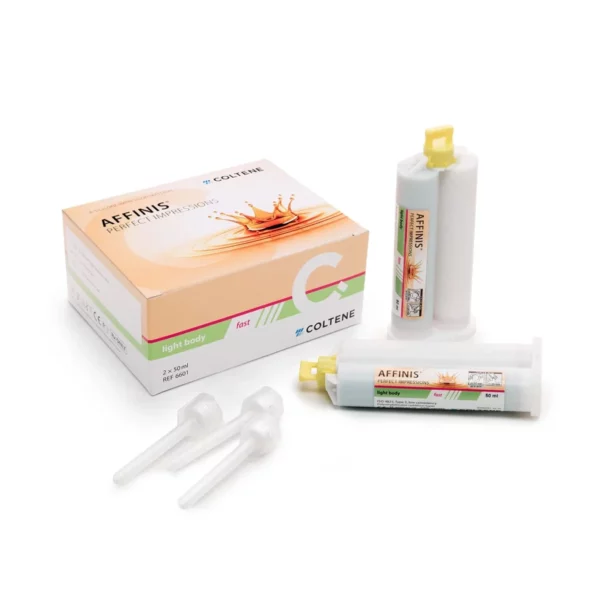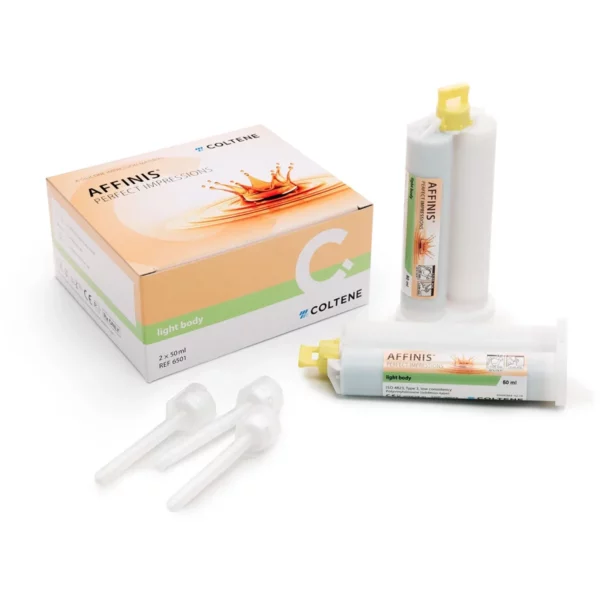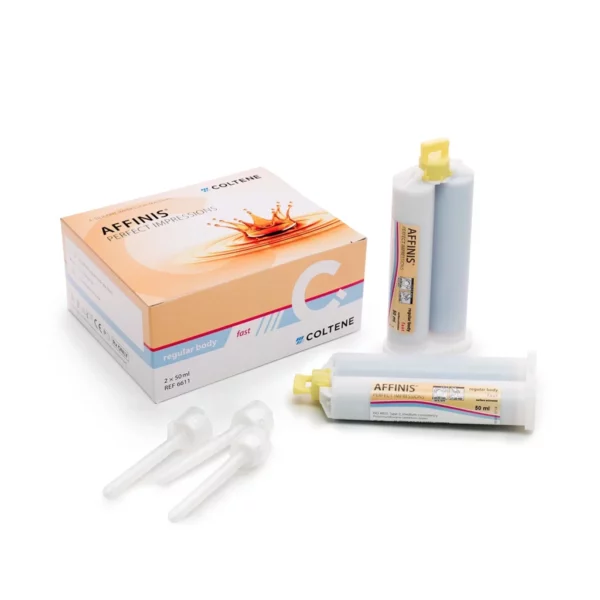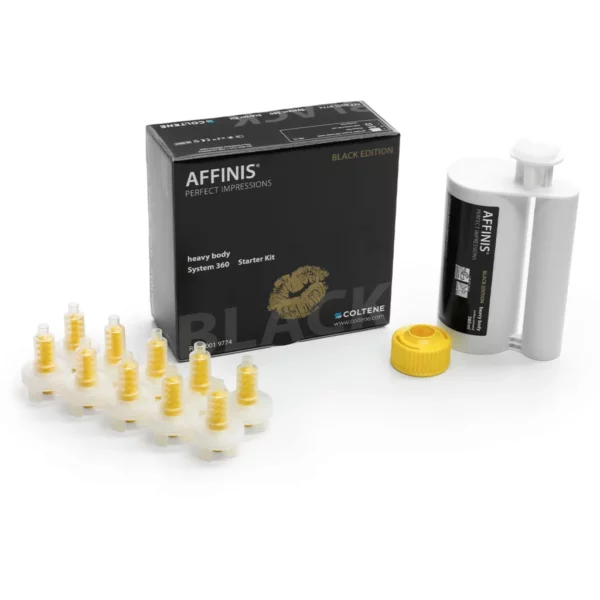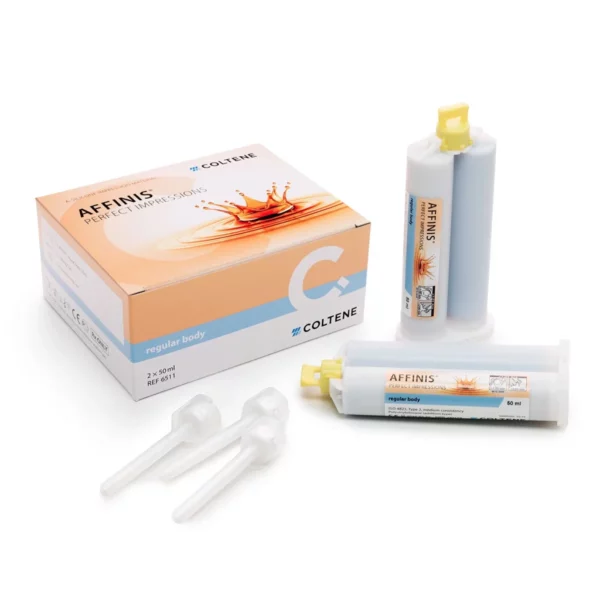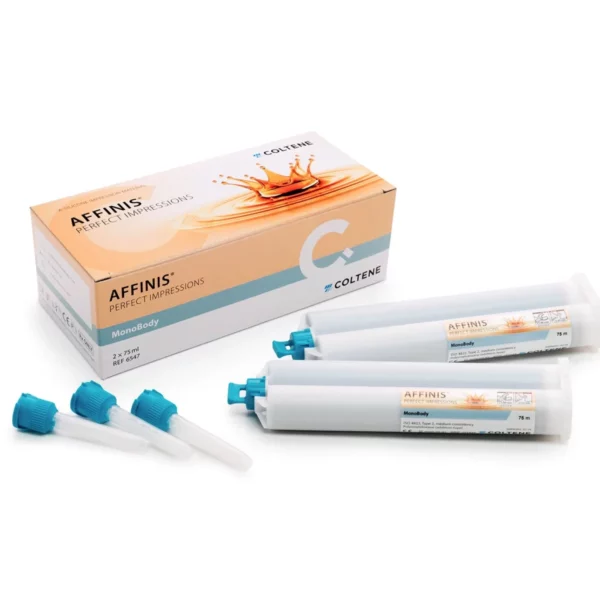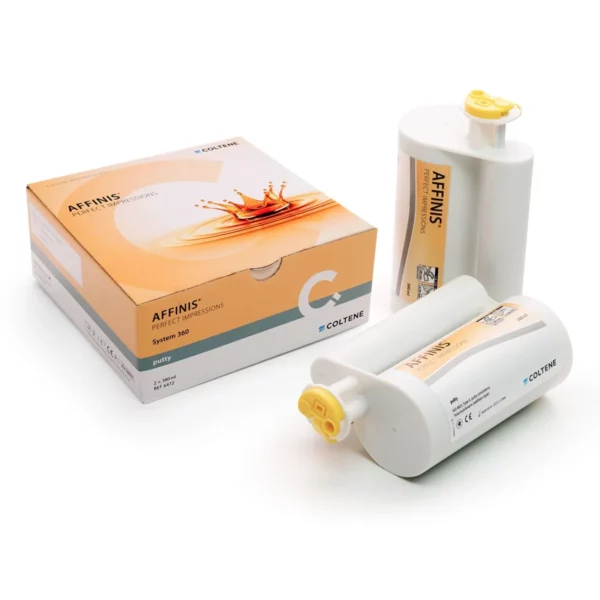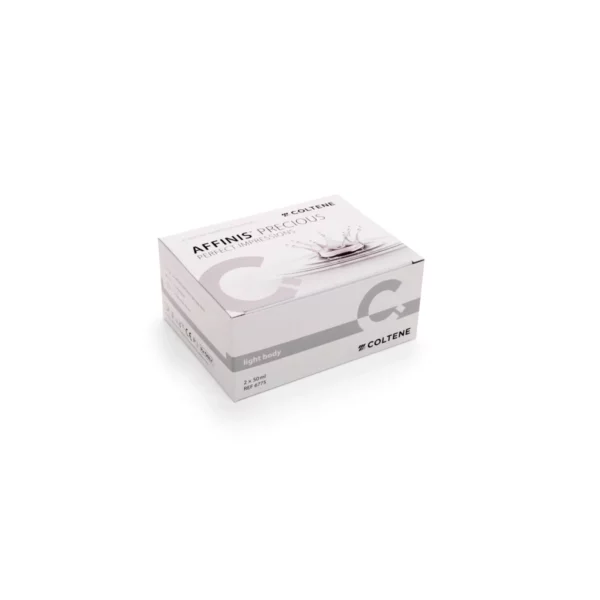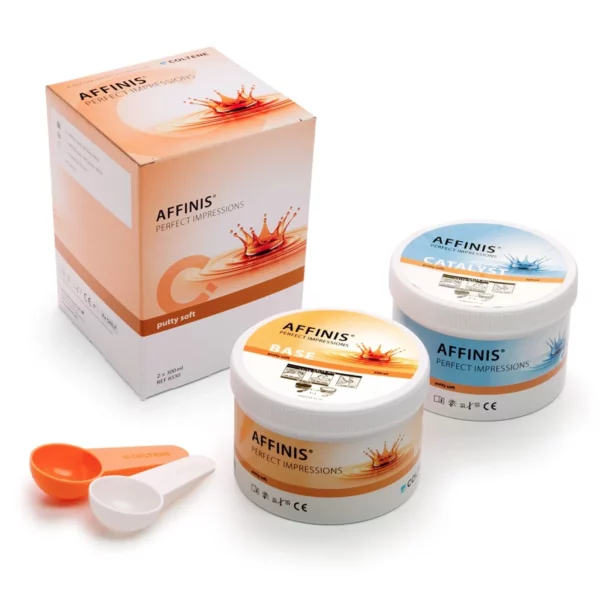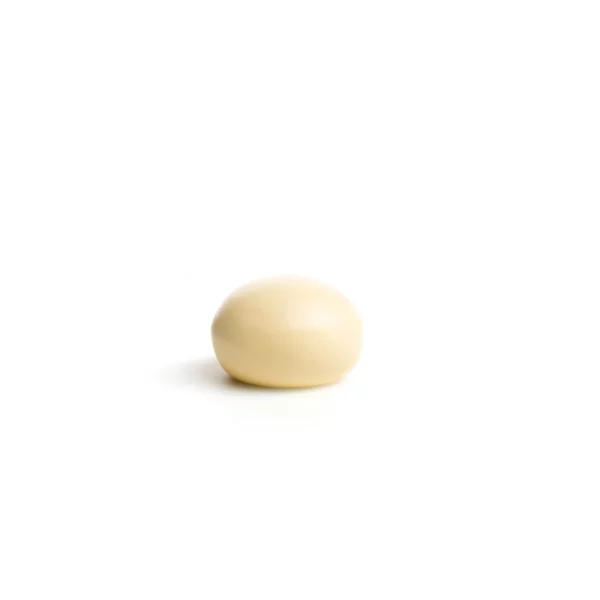Dental Impression Materials
Dental impression materials are crucial to perform dental procedures, including crowns, bridges, dentures, and orthodontic treatments. Our variety of impression materials have a high level of accuracy, are easy to handle, and offer superb dimensional stability and tear strength. With quick set times, you can offer patients maximum comfort.
Clinicians will appreciate the smooth consistency and optimal flow characteristics of Affinis Dental Impression Materials. Its thixotropic nature ensures controlled flow under pressure, ensuring uniform coverage and accurate impressions even in challenging clinical situations.
Several types of dental impression materials exist, each having its own characteristics and applications:
1. Alginate: Alginate is one of the most commonly used dental impression materials due to its ease of use, affordability, and ability to capture fine detail. It is made from seaweed-derived alginate powder mixed with water to form a viscous solution. Alginate impressions are typically used for preliminary impressions, study models, and fabrication of temporary restorations.
2. Polyvinyl Siloxane (PVS): PVS, also known as vinyl polysiloxane, is a versatile and accurate dental impression material widely used in restorative dentistry. It comes in various viscosities (light, medium, heavy) to accommodate different clinical needs. PVS impressions offer excellent detail reproduction, dimensional stability, and tear strength, making them suitable for crown and bridge impressions, as well as implant impressions.
3. Polyether: Polyether impression materials are known for their hydrophilic properties, which allow them to accurately capture moisture-rich environments like the oral cavity. Polyether impressions are rigid, tear-resistant, and have good dimensional stability. They are often used for crown and bridge impressions, particularly when a high level of accuracy is required.
4. Hydrocolloids: Hydrocolloid impression materials include reversible hydrocolloids (agar) and irreversible hydrocolloids (alginate). Reversible hydrocolloids undergo a physical gel-sol transition when cooled and reheated, making them suitable for certain types of impressions. Irreversible hydrocolloids, like alginate, set irreversibly upon mixing and are commonly used for preliminary impressions.
5. Silicone Rubber: Silicone rubber impression materials, such as condensation-cured silicone and addition-cured silicone (PVS), offer excellent accuracy and detail reproduction. They are used for various dental applications, including crown and bridge impressions, implant impressions, and removable prosthodontics.


